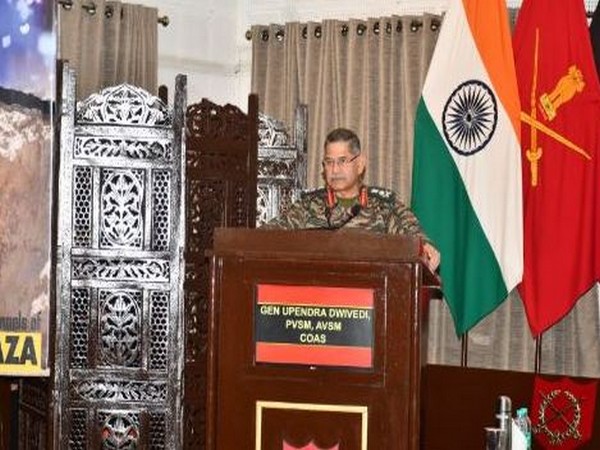. |
Updated: Nov 28, 2024 19:15 IST
Mhow (Madhya Pradesh) [India], November 28 (.): General Upendra Dwivedi, Chief of the Army Staff (COAS), addressed participants of the 26th Doctrine and Strategy Seminar (DSS) in Mhow on Thursday, according to a statement from the Ministry of Defence.
The two-day seminar, themed ‘Need for Adaptive Doctrines/Operational Philosophy for the Indian Army in View of Recent Conflicts and Technology Infusion in Warfare’, was held at the Army War College on November 27 and 28.
“The seminar aimed to critically evaluate the validity of established doctrines, operational strategies, and tactics, techniques, and procedures (TTPs) of the Indian Army in light of recent conflicts and advancements in niche technologies. It sought to recommend necessary changes to doctrines, operational philosophies, and TTPs to address future challenges. Experts in geostrategic and geopolitical affairs, the armed forces, defence public sector undertakings, and industries shared their views on operational, logistics, and capability development aspects of modern warfare,” the statement read.
The seminar was org.sed under three key themes:
The Global Scan – Latest Trends and Technology Infusion in Warfare and Implications for the Indian Army.
Warfighting Strategy – Rethinking Doctrine, Strategy, and TTPs in the Context of Modern Warfare.
Technology as an Enabler – Human Resource and Logistics Aspects.
During his address, the COAS praised the comprehensive analysis of strategic and operational issues, underscoring the necessity of transformation and adaptation to the evolving nature of warfare. He highlighted that modern conflicts increasingly focus on achieving political objectives through non-military means, with military strategies leveraging advanced technologies. He characterised contemporary warfare as a continuum of the “5Cs”–competition, crisis, confrontation, conflict, and combat–blending statecraft and diplomacy with kinetic and non-kinetic measures.
The COAS identified the defining traits of fifth-generation warfare, including non-kinetic military actions such as disinformation, cyberattacks, and the application of artificial intelligence and autonomous systems. He stressed that while new forms of warfare are emerging, older methods remain relevant, with both contact and non-contact approaches being integrated into strategies.
Reflecting on the Russia-Ukraine war, the COAS emphasised key lessons such as the importance of combined arms operations, asymmetric tactics, and civil-military integration. These lessons highlight the need for military leaders to operate cohesively within the broader DIMET framework (Diplomatic, Informational, Military, Economic, and Technological). He also referred to the ongoing Decade of Transformation (2023-2032) as a significant step towards achieving this integrated approach.
On national security, the COAS discussed challenges such as Grey Zone operations, the two-front threat, and the necessity of harmonising land, maritime, and air strategies to safeguard India’s interests in the Indo-Pacific region. With adversaries increasingly employing hybrid tactics, he stressed the need for adaptive doctrines to counter multi-dimensional threats from both state and non-state actors.
The COAS underlined the importance of flexible military doctrines that ensure unity of effort while fostering individual judgment. He advocated for integrating advanced technologies such as artificial intelligence, precision warfare, and cyber capabilities to support multi-domain operations. Military leaders, he said, must adapt quickly to technological advances and foster institutional agility to develop and deploy innovations.
On leadership, the COAS highlighted its critical role in military adaptation. He called for strong, adaptive leadership to overcome challenges related to doctrine and technology. He also advocated for reducing doctrinal rigidity by promoting agility, decentralisation, and rapid decision-making, especially at the tactical level.
In his concluding remarks, the COAS stressed the need for adaptive doctrines incorporating dynamic threat assessments, technology integration, realistic training, and wargaming. These doctrines, he said, should foster jointness, interoperability with allied nations, and seamless civilian-military synergy, leveraging private-sector innovations for military applications. (.)

